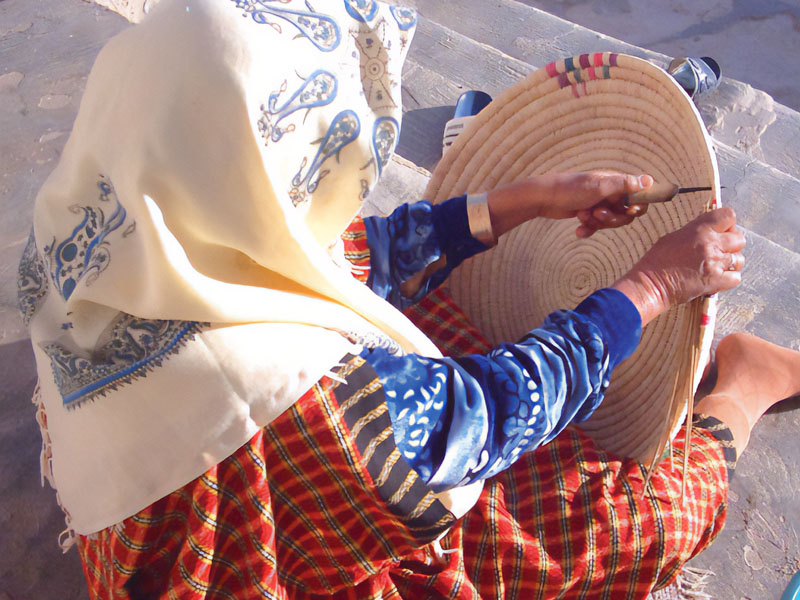Palm industry in southern Tunisia
Issue 7

Mohamed ALjazeerawi - Tunisia
T he diversity of functions so that it is not only restricted to beneficial request but also achieve the aesthetic function; it usually show adornment and decoration with the possible presence of the social function as it may determine the social affiliation of their users. The researcher chose as a material for his research a traditional craft industry, namely the Palm industry and Nafzawat region which is located in the south of Tunisia. This practice is an ancient craft in the region but it is lower than the rest of the neighboring cities such as Al Jerid and Gabes. After being deployed largely in the majority of villages in the area, it is confined today to some elderly men and women, after they had their products are of a very important place in terms of uses it occupies today a secondary position, leaving the area to plastic manufactures... In the beginning, the Researcher focused on raw materials and work tools used: Palm is the basic raw material and is abundant in the area but it does not exhibit the same characteristics, it is qualitatively different in the same Palm, since dry Palm is useless, but what is used is the palm heart only. Its size changes from one Palm to another, it is large in one palm and thin in the other, long in this and short in the other. There must be some secondary raw materials such as powder for painting, and some ropes for sewing and sticks to hang on ... As for business tools,’al ashfa’ is used, a knife to cut is indispensable, and a file to sharpen iron tools ... In the second part of the research, the researcher pointed to the techniques used in this traditional craft so that we have perceived the existence of two techniques: ‘al dafira’ technique, the crafter uses only his hands and a sewing technique that uses in the ‘al ashfa’, preceded by a joint preparatory stage divided to accurate stages, in which focus is necessary, but urgent work produces a piece of lower quality. These four stages are: drying - storage - Coloring - marinating. What can be seen is a sort of sexual specialization of labor whereby only men work the plexus and women are specialized in sewing, despite some of them who learn men techniques but do not use them only rarely. Each of them make almost what they need. The man who is a farmer at the same time makes a product that he used in the oasis and the woman therefore makes what she uses in her home. It must be recalled here that a palm crafters like most literal rural crafters in villages do not have workshops in the market, but they perform work in their homes, their work does not take full time but only on the leisure of the day. At the end, the researcher tried to classify traditional manufactures of Palm into groups and he found easier to classify them according to technology first and then to function. We found in the manufactures of sewing dish and landfill and runes, while the first is used to serve eating for example, the second is used as a cover for it. The runes are used to transport grain and dates and olives from the oasis to the village, and it is used for the storage of these same materials in the rooms of houses. Palm products are characterized by the number compared to products such as sewing; some of them are used as carpets for prayer, or to carry, to transport, to store, or to cover the head ... This type of craft characterized by density and diversity of its products needs deep search, and to expand the scope of the field work to include other areas, and needs the intervention of the relevant scientific responsible because they contain material cultural heritage, a part of folk culture of local communities that are far away from major towns and cities, and it captures an important part of the immaterial heritage represented in the ideas, skills and experiences that must be preserved as well.







































































